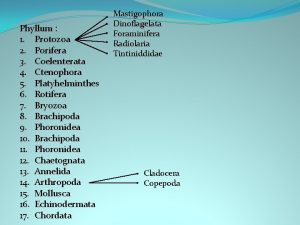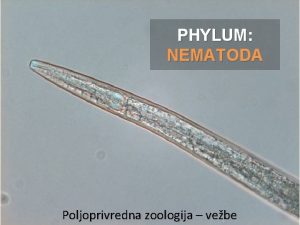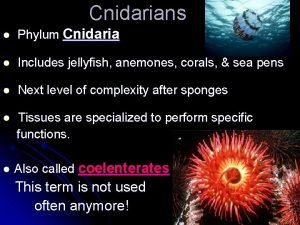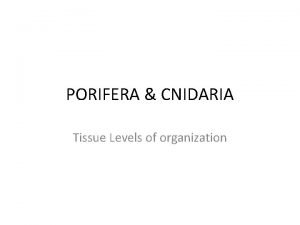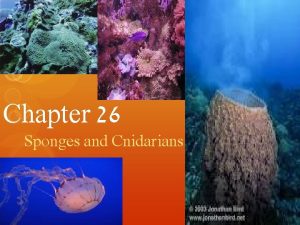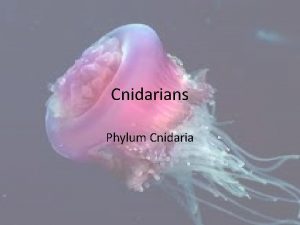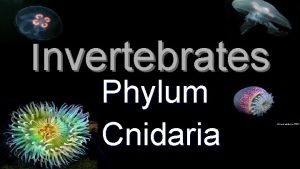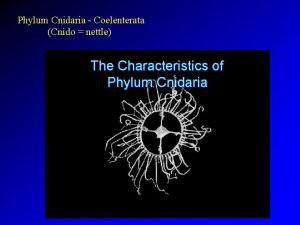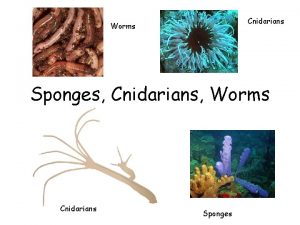Cnidarians Phyllum Cnidaria Cnidaria means nettle Includes Jellyfish







- Slides: 7

Cnidarians

Phyllum Cnidaria �Cnidaria: means “nettle. ” �Includes Jellyfish, Sea Anemones, and Corals �Contains 9, 000 mostly marine species �Carnivorous: eat crustaceans, fishes, worms, and diatoms.

3 Classes �Hydroidea: Small, polymorphic (can be both medusa and polyps) �Scyphozoa: Mainly jellyfish Polymorphic �Anthozoa: Corals and sea anemones. Lack medusa stage

Cnidoblasts � Almost all Cnidarians have stinging cells called cnidoblasts or nematocysts. � These cnidoblasts are deployed on tentacles that end or retract toward the mouth. � Each cnidoblast has a capsule with a coiled threat that can be forcefully ejected and contains a toxin or immobilizing prey.

Digestion � The tentacles bring food toward the saclike digestive cavity. � Digested food is absorbed by cells of the digestive cavity and transported to other parts of the animal by migratory cells or by diffusion. � Indigestible bones are eliminated through the mouth.

Morphology �Multicelluar �Single body cavity called and enteron �An opening surrounded by tentacles with stinging cells or cnidoblasts. �The opening functions as both the mouth and the anus.

Morphology �Three layers of cells: Inner layer called Endoderm or gastrodermis responsible for digestion and reproduction. Outer layer called the ectoderm or epidermis for capturing prey and for protection from attack. Mesogloea: gelatinous, non-living layer holding the other layers together. �Radial Symmetry: Body parts radiate from a central axis. �No cnidarian possesses a definite head or concentration of sensory receptors, but can have a primitive network of nerves. �No excretory or circulatory systems. �Sea anemones and corals are benthic and attach to rocks. Jellyfish are pelagic and float in the water column.

